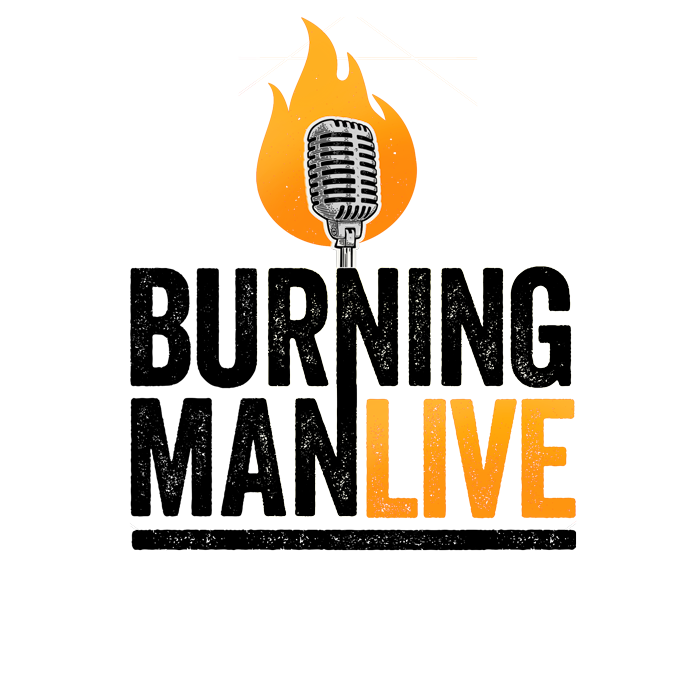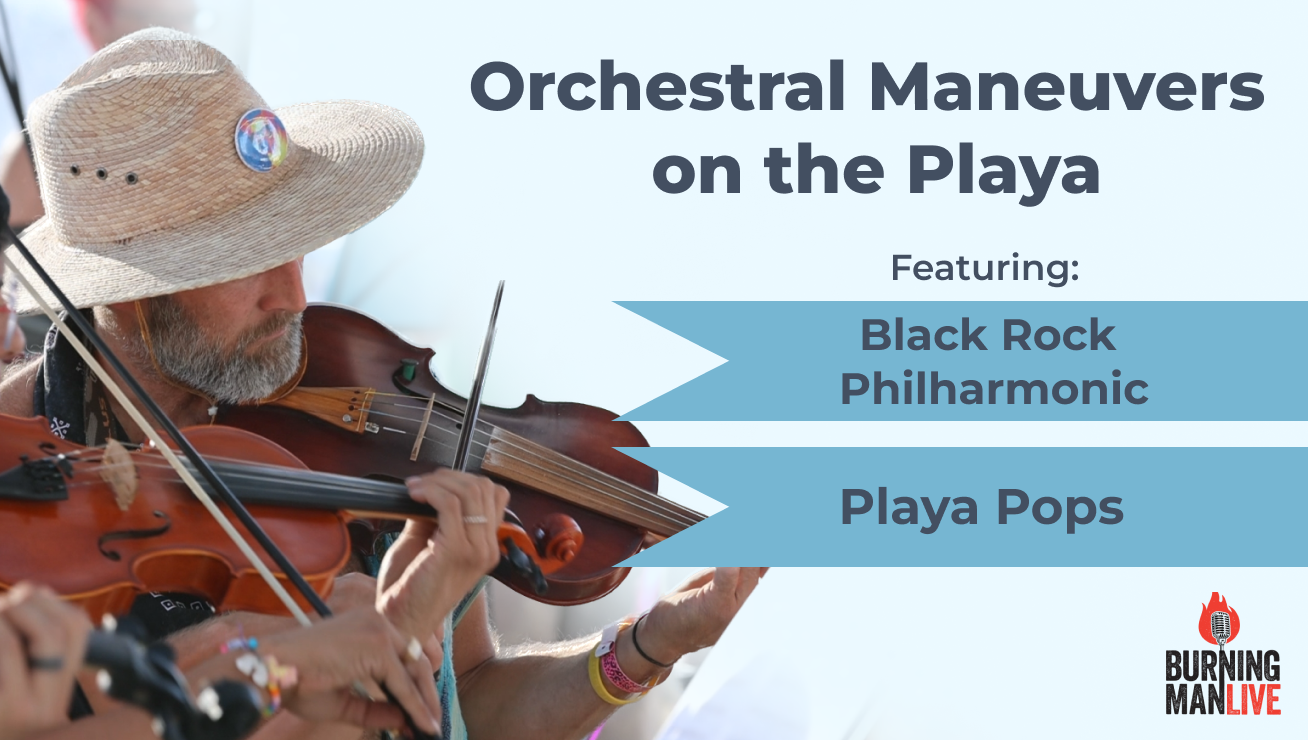
Orchestral Maneuvers on the Playa
Some people are surprised to learn that Black Rock City is home to not just one but two full-fledged symphony orchestras. While the Black Rock Philharmonic kicks out the classical jams, the Playa Pops brings the big-ensemble sound to popular music. Both are composed (ahem) of passionate volunteer musicians – classically trained, self-trained, and otherwise – who come together once a year to perform in the dust (or mud) the songs they have practiced all year at home.
In this installment, kbot and Stuart talk to members of the Playa Pops and the Black Rock Philharmonic about their music, their performances, and how the desert hates their instruments. And we get to hear some amazing live music performed by actual humans, recorded live at Burning Man 2023 in the Black Rock Desert.
Transcript
ERIC YTTRI: All sorts of things go haywire. And that’s part of the magic of it, right? Who would expect a 70-piece symphony orchestra in the middle of a place that’s designed to kill you? It’s just… that juxtaposition is kind of what makes it special.
STUART: Hey, everybody, welcome back! Your ears do not deceive you. This is in fact, another episode of Burning Man live! This is the first of what’s going to be a two part episode on the musical sounds of Black Rock City. And kbot here actually started planning this long ago, before the mud bath that was Burning Man 2023. What was on your mind back then?
KBOT: When we talk about the musical sounds of Black Rock City, most of you are thinking boots and cats and the big boom boom. And well that’s really great and we love it. That is not this!
STUART: Unts, unts, unts, unts, unts, unts, unts, unts. Yeah, there’s no music in Black Rock City. There’s just boots and cats.
KBOT: You kids call that music?
STUART: Yeah. Burning Man was… Some of the founders of Burning Man were the Cacophony Society. There used to be — and if you keep your ears tuned, still is — a wide variety of musical styles out there.
KBOT: I heard there were a lot of bongo drums in the early Black Rock City.
STUART: There were drum circles. Yes, this is true. There was a guy, uh…one of the first musical ensembles was one guy with a really big drum kit, and then the guy with the gong. There’s bluegrass and roots music, there’s hip hop music, there’s so many different styles in different parts of the city and on different stages. But is there really orchestral music out there?
KBOT: There sure is. Black Rock City is a city just like any other city. We have classical musicians who perform multiple times, and they fly from all over the world bringing instruments at considerable risk to bring their music to Black Rock citizens. So we wanted to meet them. What kind of person decides that they want to play in an orchestra that they’ve never met, in front of and in participation with thousands of people? I wanted to know.
STUART: We’re going to start with talking with a couple of members of the Pops. And it sounds like this.
If each of you could say your name and tell us what your role is with the Pops.
BRYAN NIES: My name is Bryan Nies, and I have the honor of being the conductor of the Playa Pops this year.
PHILIP MEASE: I’m Philip Mease, and I have the honor of being a member of the cello section of Playa Pops, and I’ve been doing this since 2014.
ELLEN O’NEILL: I’m Ellen O’Neill, and I am the director of Playa Pops this year, meaning I do a lot of admin.
STUART: All right. And the second question is harder. Why, why do you do this? What’s in it for you?
PHILIP: I do it because it is one of the most wondrous magical things that I do. And there is not a year that goes by playing in the orchestra where I’m not just weeping with the experience of playing both classical and fun pop music and vocal music in dust storms and in the bright sunshine and there’s nothing like it, to be able to play this kind of music and bring this kind of joy to people on the playa.
BRYAN: Classical music, well, music generally, has been part of my life and soul and heart. So when you go to Burning Man for your first time – I’m going for my fourth this year – the very first thing that you want to do when music is that important to you is you want to share it. Music is always a living, breathing, art form, right? It’s about being in the moment. So, when you have that background and have that love to share, you immediately connect to Burning Man and want to do that as well.
ELLEN: For me, I saw the Playa Pops play in 2017, which was my first burn, and it brought back memories of playing in my high school group. And I always loved the experience of playing in that group, but I hadn’t played since, and then been in like a 20 year gap, but the founder of the Playa Pops, she welcomed people like me. She would put the music out months ahead of time, so that we had plenty of time to learn it. And so for me, it’s was just a magical experience, but also an accessible one.
KBOT: Amazing. Who here best knows the origin story? How did Playa Pops come to be
PHILIP: I’ve been with Playa Pops the longest of the group here, but even I was not there the first year. Like Ellen, I happened upon it during my 2013 burn and joined the next year. So, I actually don’t know how the very first group came together, but it’s been something that has been a steady force for every year that the burn has occurred.
We’ve had really neat music that we’ve been sharing with people in various venues all around the city, out at the Temple, in Center Camp. My sense is that the audience members have really appreciated having good classical music as well as being able to sing along with Beatles’ songs, John Lennon’s song “Imagine,” “Amazing Grace.”
A favorite is “Happy Birthday.” We invite somebody up from the audience whose birthday it is and they conduct the orchestra, it’s their first time conducting the orchestra, and singing “Happy Birthday” to them. And then, when we play Ode to Joy, and everyone in the audience is tossed a kazoo and we teach the audience how to play kazoo along with Ode to Joy, and it’s truly a joyous experience.
KBOT: Do any of you remember the first year, even though you maybe weren’t a part of Playa Pops? When did it start?
ELLEN: So it was founded by a woman named Pigtails. She just wanted to get together with some fellow musicians on playa. She also wasn’t a professional musician, and it just grew from her playing with a couple of other strings to a full blown orchestra that we have today, which we have a percussion section, we have woodwinds, we have strings, we have brass. We have a harp! We have a very dedicated member who brings a very expensive and very finicky harp all the way to playa to share it with everyone.
KBOT: How do you rehearse before you get to playa?
ELLEN: It’s a great question. We put the music out… the goal is six months ahead of time, so people can download their parts and play at home. And we also have audio files, so people can hear the whole arrangement and play along with it at home, so they can see how they fit in with the larger group. And then we meet up on playa, in person.
That’s where we work out the rest of the kinks, and might make some notes and changes, but we try to keep it as close to the original as possible because you know how it is at Burning Man, sometimes you want to get to a place and can’t get there. So we try not to make it too confusing, but we hear how we sound together and make any adjustments we need to make on playa. And then after those two rehearsals, then we go live with our first performance, and we have four performances scheduled.
KBOT: Can you tell me about those performances?
PHILIP: I’ll jump in with one that I think will be particularly fun. We’ll be playing under the big top at Red Nose District which is known for its circus performers, aerialists, clowns, and so on. They’ll be performing on stage while the orchestra is playing. So the aerialists will be doing their thing with Beethoven, and the clowns will be doing their thing with Die Fledermaus. We even have one of the clowns who I learned yesterday plays recorder through his nose, while singing with his daughter, who’s also singing. So they have a trio. Can you imagine? So that will be quite a special performance, followed by happy hour at the Red Nose District bar.
And then there are some very special performances including the Temple. Every year that is so emotionally moving to be playing, especially classical music with everyone there at the Temple. A very, very special time.
KBOT: Brian, how did you come into this world? Are you a conductor in your personal life too?
BRYAN: I am a conductor in my personal life. It’s no longer my full time job. But I in fact recently just got a post with the Symphony of the Redwoods, up in Mendocino, a small but incredibly talented and active professional orchestra up there. I see so much of the Burning Man community up there: Lots of artists, lots of scientists, lots of really creative people, so, yes, it is something I do.
From a conductor’s viewpoint, you get scores or you select music, and a lot of what Ellen says really fits into, I think, how music is chosen, because there is this inclusivity, right? If you haven’t played for years, the music, I found a really interesting flexibility about it, because the way it’s arranged allows for not only different levels of playing, but also allows for the experience of Burning Man to happen, that should someone not be able to make it, or miss the time, as we all know happens at Burning Man, we’re able to get a full sound and have a very successful performance.
But I’ve also found myself in a very interesting way, sort of, prepping for rehearsing, I’d say, more than I normally do. It’s sort of, “Oh look, the rosterer gives me five trombones. How do I make sure all these five trombones don’t come in playing one single part when we have three or four parts? And how can we rally them together?” I’ve done the same with the flutes, as Ellen knows, same with percussion. Can we make sure we have maracas and tambourine and triangle, and do not just bring your glockenspiel, but bring everything in your arsenal to get it together. So there’s a lot of interesting prep work going on, which I think is going to affect the final sound.
I thank Ellen for all of this. One day, I knew I was going to Burning Man this year. Lo and behold, I get an email from Ellen saying, “We’re looking for a conductor. Are you interested?” It was one of those beautiful Burning Man kismet moments. I don’t even know how you found me. I couldn’t believe it. It was one of those “This is exactly what I wanted to do at Burning Man this year” sort of experiences. So, that is how I was found to be part of this group.
STUART: Does anyone bring a glockenspiel?
BRYAN: Yes, we have two people. There’s a way to sign up and you list your instrument in the Playa Pops’ portal. And you can list glockenspiel separately, and two people have said they specifically specialize in glockenspiel.
I had a long talk with our harpist yesterday, who happens to be in France, which is again part of these rehearsals preparations. She just sent me a video. She has a new, clear harp, that lights up in rainbow changing colors as she plays, just for Playa Pops this year.
STUART: Does it have flame effects like Tubatron?
BRYAN: She needs to get with a fire camp. Absolutely.
STUART: That’s really beautiful. I mean, a glockenspiel is gonna hold up pretty well in the desert. Harp, maybe not so much.
BRYAN: Care and instruments are so hard. The desert is the complete, probably worst place an instrument can survive. We have a tenor sax I’ve been chatting with about repairs because his last time he brought it, the dust and everything caused some damage that he now has to fix. In the same way we all know playa bikes, right? One year you’re midway through the playa and it breaks down. Thankfully you have repair camps. We don’t quite have an instrument repair camp at Burning Man. You have to take extra care, and work on them, and also have it be transportable. Like I’m sure Phillip has a bigger issue, right? carrying a full cello. We have a string bass player. Imagine what that’s like carrying it around the playa.
STUART: Do you have a piano?
BRYAN: I don’t think so this year. I mean, if so, it’s one of those you have to bring a keyboard, right?
STUART: Well, I ask because in my camp bar for years, we had an upright piano. A friend of mine got it for free on eBay, so it was of the quality you would expect for free on eBay. After it sat a year, kind of semi-exposed to the elements, he brought it back the next year. It didn’t sound very good at all. He put up a little cardboard sign and said PIANO TUNER WANTED, he had like three people show up.
And the next year it was even worse. And he had a guy show up who didn’t have just a little piano tuner kit, he had like a suitcase. He took that thing down to the boards, put it all back together. And this lovely young Russian concert pianist came in, sat down, did a few runs on it and said, “Yeah, this C is a little flat, but I can play it,” and she just rocked out some Rachmaninoff! It was like one of those playa moments. Yeah.
KBOT: It just gets so obscure. You know, it’s like, “Well, what do you do for fun?”
“Well, I bring my glockenspiel to Burning Man. I tune pianos at Burning Man. I play Rachmaninoff at Burning Man.” That’s super niche.
PHILIP: That’s right. You’re right, Brian. I have a whole cart arrangement where I have strapped my cello on, and the music stand, and the chair, and then typically I’m also bringing, from members of our camp who are part of the orchestra, I strap their violin on, I’ll strap their flute on; it becomes a whole procession as we’re getting from one concert venue to another.
The big item is the harp. Boy, transporting that around is something, but when you’re in the concert and the harp is playing with the strings playing Amazing Grace, it’s worth every bit of effort that has gone into getting it there. It’s just gorgeous.
ELLEN: I have it really easy. I play the flute!
KBOT: You put that in your backpack.
STUART: But the playa is hard on brass and winds too. I mean, it’ll eat your gaskets up, right?
ELLEN: Yeah, absolutely. Last year, our last concert, last year our last concert was at Center Camp in the middle of a dust storm. And it was the last show of the year and we persevered and we played, and it was really, really amazing, super high energy show. And then I packed up my flute and we got off, we got out of there. and so when I got home and I unpacked my flute, a pile of playa dust fell out of it. It was a great souvenir.
PHILIP: That concert was one of my favorites just because the wind was whipping the flags over Center Camp. There’s a blinding sandstorm within Center Camp. But everybody in the audience was just so there, cheering us on as we were battling the elements. My cello was just caked in it after that.
One of the things that we’ve added last year to the orchestra is a vocalist, a person from our camp named Jane Lee, who sang in Nashville, with a rock band. She now leads the orchestra whenever we play something like “Imagine” or “Lucy in the Sky with Diamonds.” She’ll lead the whole audience in singing those tunes, and it just gets everybody engaged.
KBOT: And you’re doing a Journey sing along this year? Is that true?
BRYAN: I think everyone knows Journey songs. They’re immediately one of those, like, deep-in-your-soul sort of structural songs for me. It’s so familiar. What else do you want to do but have Burners everywhere who know this music and will put arms around each other and sing together? It’s one of the things I’m looking forward to the most this year.
KBOT: What else are you playing out there this year?
BRYAN: A 50-50 mix of what in the orchestra world you consider more classical pops music. Things like the opening to “Capriccio Espagnol,” the Rimsky Korsakov piece that is just about celebration and his version, a Russian’s version, of Spanish music a little bit. So you get those maracas and tambourines and all of the percussive sounds that you know.
A big nod, and a lot of this also I’ll say goes to Ellen. There was so much music programs before I even came in, that it was such a great job that she did, in rounding up really great music for orchestra. A lot of things that relate to our theme, Animalia, this year: The opening of “Swan Lake,” famous melodies that everyone knows. We have “Die Fledermaus” that was mentioned, which is the overture to an opera, Die Fledermaus means “The Bat.” There’s the great finale of “Firebird” as well, more of a fictional animal. These pieces are immediately recognizable, once they’re heard. Firebird, I know, is on the second Fantasia.
We have Journey’s Greatest Hits, as I mentioned. We’ve got Pink Floyd, “Wish You Were Here.” We have John Lennon’s Imagine, which I think is a fun, beautiful way to end.
Again, I always think of even classical music as participatory, right? If the audience is not there participating in the creation of music, it’s not part of the artistic experience. And what’s great is with pop music, you get to involve participation at a greater level than just ‘sit and listen.’ We’ve got kazoos, we’ve got sing-along. We want to hear you. We want you to get up and dance. We want you to really involve yourselves in the middle of it, so to speak.
We even have, I think, a very clever arrangement called “It’s About Time,” which are three pieces that involve time in one way or another. So it starts with a up tempo jazz version of Gershwin’s “Summertime,” goes into, from Casablanca…
PHILIP: “As Time Goes By.”
BRYAN: “As Time Goes By.” And then ends with, “Time After Time” by Cyndi Lauper. I would have never in my life put those three pieces together, yet I cannot be more excited about it.
PHILIP: In one of the performances, another camp approached me and asked, “Well, we have a couple that’s getting married. Would you play the wedding march for us?” So we’re going to play Mendelssohn’s Wedding March as this couple announces their marriage, and then walks across the esplanade to go get married.
KBOT: Wow. That’s going to be so magical. What a surprise for everybody. How does it feel the first time you get together to rehearse? You have people who’ve been rehearsing alone, all over the world, and then you’re suddenly all in one place. What’s that like?
ELLEN: It’s one of my favorite parts of preparing for Burning Man. We have the packing and the shopping and the building and the creating, but I love that image of everyone who’s going to be in our orchestra is all over the world, in their homes, practicing all on their own, and preparing to be together.
And then that first rehearsal, there we are! All the preparation has come together. And when we play together for the first time it’s really incredible. And it sounds better than you would think for only rehearsing together a couple of times, because everyone does work so hard on their own.
We have a lot of new people this year. So it’d be great to meet, especially from my perspective being the admin I have emailed with every single person. But I haven’t met them all yet. So I’m really looking forward to putting faces to the names, and meeting everyone and welcoming them to our group officially as we perform together for the first time.
KBOT: Do many of you camp together?
ELLEN: We do not. The Playa Pops is an art piece, really. Everyone kind of camps on their own and then we come together at all of our host camps that host us for our performance spaces and our rehearsal spaces. And then of course, the Temple is our host for one of our shows, and Center Camp welcomes us for one of our shows.
KBOT: Is there anything else that you want to say, you want to share?
PHILIP: When you experience art that’s in a way out of place; so in the middle of the desert, you come across this wonderful symphony orchestra playing this wonderful music, it is so moving. Again, without any issue I’m always finding myself just bawling with the beauty of creating this music in the middle of the desert.
ELLEN: I want to reiterate how accessible this group is. We purposefully create and purchase pieces that are accessible to someone who hasn’t played in a long time. So, if anyone has an instrument that’s just collecting dust in the back of your closet, please, bring it out, practice on it. You can learn only the songs that we play, and no one will know. You can come join our group and be very, very welcome.
BRYAN: Off of Ellen’s point you have to think of Playa Pops as an art piece. That immediately hit for me. Something in our professional classical music world we’re always worried that we’re going to lose support, because, in many ways, it feels like an esoteric art form, at least in America. And, at Burning Man, where you have, you know, the Esplanade and sound camps and art cars, all with large speakers and great music… don’t get me wrong, I’m out there all night long watching the sunset, dancing the night away. When you hear acoustic instruments playing melodies you recognize that are immediately accessible to you, it is a profound emotional experience.
The harpist I was talking to yesterday, we were going through every part, and a lot of this music doesn’t have a harp part, so we have to talk with each other to find out what works best. And she said something I think that applies to all of us: the orchestra, programming, rehearsing, all of it. She said “There are things you want to play, there are things you can play, and there are things that the playa will let you play.”
What I think she meant by that is 1) There’s all these wishes of what we wish you could do. I would love to do some of the great big symphonies of Beethoven or Mahler on the playa, but you’re never going to get a hundred musicians who can bring the instruments that allow you to do those things. The playa won’t allow you because of its other factors.
Yet, at the same time, Phil mentioned this arrangement of Amazing Grace that had been picked out for this year, and she’s like, “Oh, I want to play.” And I go, “I have some ideas for you.” And she wrote, she goes, “I’ve been playing around, and here’s my interpretation of this piece.” I was like, “You know what? The way we’re going to rearrange this is we’re going to start with a harp cadenza first.” She’s gonna play and introduce this piece before the rest of the orchestra even starts. And that led me to being like, “I can use the triangle here, I can use the glock here, I can make suspended cymbal become part of it.” I had the entire orchestra fit into my head how it arranged this piece.
Those words also apply to how art gets created. All these musicians from all over the world suddenly coming together, who immediately adapt, relate to the conductor, to each other, to how to play together. You’re also relating to the entire experience that is unique for every time the playa and this city comes alive in creating yet a new experience and a completely unique musical concert for everyone. It’s truly special.
KBOT: I have playa tingles just thinking about that harp Oh, my God.
PHILIP: Thank you all for doing this.
KBOT: Thank you all.
STUART: Yeah, thank you. I think it is time to take off our Journey fright wigs…
KBOT: Mullet?
STUART: …and switch out of our Journey mullet wigs to our powdered Beethoven early 19th century wigs.
KBOT: Yeah, we’re flipping the channel from the rock station to the classical station.
STUART: The Philharmonic, as we intimated earlier, plays a different flavor of ensemble music.
What’s their story?
KBOT: They were interested in playing ensemble music that had a big sound, and with a more classical leaning.
STUART: Let’s listen in and see what they had to say about their work.
BRIANNA CAMARDA: My name is Brianna Camarda. I am the principal bassoonist with the Black Rock Philharmonic. And this will be I think my fifth year.
ERIC YTTRI: My name is Eric Yttri. I’m the Musical Director of the Black Rock Philharmonic. In one way or another I’ve been doing this since 2012.
KBOT: Wow. I’m super curious about the history of the Philharmonic. How did it come to be? And who started it?
ERIC: The Philharmonic spun off of the Playa Pops symphony. Most of the players came from that group, and was arguably a little bit more ambitious and a little bit more classical forward, playing more orchestral repertoire and only, really one pop or rock orchestration, for any given year.
Playa Pops Symphony was first in 2012. I was the director and co-founder of that, with Pigtails. Eventually over time, they split, and Pops is doing lots of Beatles and rock band covers, some orchestral stuff. And we tend to play sort of the flip, mainly orchestral stuff and one or two pop pieces.
KBOT: So does someone need to audition to play in the philharmonic, or is it open to everybody?
ERIC: Open to anyone. It tends to be self selecting. The music is a bit more on the challenging side, but no auditions, which can be interesting. We have 14 flutes signed up this year, and only three or four horns in comparison. So, nine percussionists. You never know who’s going to show up on playa, which is one of the fun bits for me. But, it’s open to anyone.
KBOT: Yeah, that can lead to some very complex musical arrangements, I imagine. What is the most unusual instrument that’s going up this year?
ERIC: I think it’s Brianna.
BRIANNA: Probably.
KBOT: Amazing.
ERIC: A bassoon is big and unwieldy and the reed is prone to breaking.
BRIANNA: And if you look at it wrong, it breaks.
STUART: How does it like hot dry weather?
BRIANNA: It doesn’t. My first year I took my one and only instrument, that was sort of defunct, so I thought, “Well, use it or lose it.” And I now have a separate instrument that I play outside in general, not just with the Black Rock Philharmonic, but like locally. I have local shenanigans that I don’t want to bring a nice instrument into play.
So this year I’m hoping it’ll do better in the hot dry because it’s plastic. And the orchestra is nice enough to provide an air controlled environment, a storage locker, for instrumentalists who are a little bit wary about bringing their baby out.
KBOT: Oh, that makes a huge difference. I can imagine someone with a string instrument or a bassoon being extremely worried. I’m sure you’ve had a few nos in the past from people who were like, “Well, I’d come, but…”
ERIC: We get that. And even with the precautions, we’ve had bridges break in the middle of shows and all sorts of things go haywire. And that’s part of the magic of it, right? Who would expect a 70-piece symphony orchestra in the middle of a place that’s designed to kill you? It’s just… that juxtaposition is kind of what makes it special.
BRIANNA: Are we 120 something this year, Eric?
ERIC: We’ll see how many, I mean, that’s the sign ups, but… yeah.
STUART: Aspiration of 120. And you said 20 of those are flutes?
ERIC: 14. Only 14.
BRIANNA: Only.
STUART: So, I’m just imagining, what do you do with 14 flutes and a giant percussion section?
Is it some, like, strange arrangement of Flight of the Bumblebee or something?
ERIC: We’ve never actually had a problem really with balance, so…
STUART: Just play louder. Um, yeah.
BRIANNA: Depending on your…
STUART: OK, or play softer. Got it.
BRIANNA: I will say that the bassoons, we’re saving our wine corks for flute mutes. Don’t tell them. Don’t tell Maestro! It’s a secret.
KBOT: So, how do you rehearse a hundred and something musicians to get them ready for this?
ERIC: A lot of it is on the musicians themselves. In late spring, and, at least the concertmaster and I, distribute music, our notes to the musicians. The real challenge comes with, we have two two-hour rehearsals and one extra optional two hour rehearsal. So this year, I think we’re playing 10 pieces, about an hour of music. I’ve got to know every part and go bing, bang, boom, to get it all ready for our first show on Wednesday.
KBOT: So you have, did you say, three rehearsals before your first show on Wednesday?
ERIC: And only two are required. People are still coming in on Sunday. So it’s hard to make that anything more than optional. But yeah, worst case scenario, I’ve got four hours to rehearse 10 pieces.
KBOT: And how many times do you perform on playa this year?
BRIANNA: Three, right?
ERIC: Just doing three this year. Last year was so hard we’ve toned it back from our normal four or five.
KBOT: And where are your shows?
ERIC: Our shows are Wednesday at Frozen Oasis, and then Friday morning we’ll be doing a special Temple show at nine in the morning. Thursday’s going to be our really big show out, in open playa at Chapel of Babel, which is going to be about a five story tall structure that you can climb in and on. We’ll be in front of that, several art cars out there providing sound.
KBOT: Wow. So many logistics to coordinate. And you have art cars amplifying the show at Chapel of Babel?
ERIC: Correct.
KBOT: Oh, that’s going to sound so incredible.
ERIC AT BRC: Thank you for coming out to the Black Rock Philharmonic!
KBOT: What are you most excited about this year? What’s the thing that’s getting you really, really hyped to be out there?
ERIC: Just making music with everyone again. Our Thursday show is always the biggest, we do a special encore of Bohemian Rhapsody. The first time it happened, we had no idea what was going on. All of a sudden, 3000 people, I’m told, 3000 people were singing along and then dancing along.
We’re doing Hotel California this year, which will be a beautiful piece that means a lot to people. Also one of The Eagles’ members just passed away. So that’ll be nice to memorialize that.
Also Finlandia, which is a piece by John Sibelius, which is a tour du force for the whole orchestra, and really shows sort of the maturation of the group. We’re playing the original orchestration, and three years ago, it would have been a pipe dream to be able to play this music, particularly out there, and with only such limited practice time.
ERIC AT BRC: Thanks very much. This is Finlandia.
KBOT: Brianna, what are you excited about this year?
BRIANNA: Playing music with everybody. The piece I’m excited about I think is Marriage of Figaro. The piece I’m having the most trouble practicing. So, I feel like it’s going to be really rewarding to just get out there and smoke through those runs with the other low end of the orchestra.
I’m excited about reconnecting with the individuals that I’ve met along the way, to see the open playa, and I’d sort of have a bounce back from last year. I think last year was hard for everybody because we hadn’t done it in so long. And then to get out there and be met with what happened was extra brutal. So I feel like the bounce back is going to be: I’m back on my game. So I’m excited to get out there again.
KBOT: How does it feel when you all get together and rehearse for the first time?
BRIANNA: I’m overwhelmed. Just with gratitude and joy. It’s really been a life changing experience. but I have to stay emotionally regulated throughout, to be able to project that. So it’s an interesting exercise as a musician.
KBOT: I can imagine. Yeah. You’re not the first musician we’ve spoken with who says that they’re moved to tears when they play out there, but you have to stay on track at the same time.
BRIANNA: Yeah. You can’t look directly into that light. You know, it’s there shining on you, but you have to focus. Some conductor along the way, I remember, said it the most succinctly, and it stuck with me throughout the years. He said, “You know, you play music and it sounds and feels like to the audience, like dancing through a field of flowers, like a meadow at sunrise, and it can’t be like that for you as a musician, completely. There’s the logistics of everything you’re doing and staying present enough to not get distracted, and lose track of what’s going on around you.
You have to create the field of flowers while also, you know, “Oh, here’s a, here’s a time signature. Oh, there’s the, there’s the one.” It’s the heightened sort of ability to perceive that’s out there, the sort of same-brain, I don’t know, the openness of connection that is really the magic of Burning Man for me, makes it an extra challenge to stay emotionally regulated as, as a musician when I play. But it’s obviously a dance, I think we all like to do. I’ve joked with Eric before that, orchestra music is, uh, emotional edging. And I stand by that comment!
KBOT: I think we can kind of relate to that (can’t we Stuart?) in the sense that being part of the crew or the organization that helps to produce Black Rock City, it’s kind of similar, right? You have to stay on your game and you have to think about what you have to do every day, but at the same time, there’s this overwhelming thing happening all around you.
STUART: You can’t go to Burning Man.
KBOT: We don’t get to go to Burning Man?
STUART: No, we don’t go to Burning Man.
ERIC: You go to Working Man?
BRIANNA: Working Man? Crying Man?
STUART: Well, there’s Spreadsheet Man and Meeting Man all year long. And then there’s Relationship Breakdown Man, when your partner, who loves Burning Man, will say “Can’t you just shut up about what’s wrong with the burn this year? Could you stop talking about the pyro synchronization problems and just let me enjoy the motherfucking burn?” Yeah.
ERIC: Never.
STUART: You said earlier that the group is pretty much self-selecting because you choose more complex music. Is it more than a half or less than a half professional musicians in the group?
ERIC: Oh, much less than half are professional musicians. Plenty of people who play for fun, you know, in a community group of some sort. But there’s also a good number who, the instrument goes into storage until they start practicing in June and comes back out, and it goes back into storage in September.
On the flip side, there’s several people, and Brianna you might be part of this, that maybe had a more adjacent relationship with music, and then they come out and play. I know one individual in the cello section who had pretty much not played his cello for years. His partner died, tragically due to cancer. He brought a cello out and fell in love with playing again, and now he’s in three or four different ensembles where he lives, and a lot of things have changed for him. So, plenty of people, maybe not that dramatic of a situation, but every year I hear about people who, thankfully this was a wonderful launching off point.
BRIANNA: That totally tracks for me. Like I said, when I brought my bassoon for the first time, I brought it and you guys in the orchestra leadership were like, “Oh my gosh, you’re so brave.” I’m like “Brave? Not really, cause it’s not functional in the real world and I don’t really play it in the real world.”
It took a few years. For the first, probably a year, maybe two years, I was one of those people who the bassoon came out when I got the sheet music for the Black Rock. And then I found a teacher, started taking lessons. Now I’m in a couple different local groups here. I just went to Italy for an international music academy. I spent two weeks in Northern Italy doing chamber music intensives. And it is directly related to me coming into this orchestra, and rekindling my relationship with music.
It used to be that the Black Rock Philharmonic was like my only way to connect with this ensemble way of making music. And now, going to Burning Man I have to decline a number of interesting gigs that my other groups get invited to. So, it’s really changed my life.
ERIC AT BRC: If you can, for the people in the back, take a seat to help more people see this wonderful and shockingly beautiful ensemble, despite all the dust.
Our next piece, the actual words that go along it talk about a troll king nibbling on fingers, biting people in butts, and general forms of torture that you might find at Spanky’s Wine Bar. It’s an all out race to the finish and a fan favorite for many. This is Grieg’s Hall of the Mountain King.
BRIANNA: It’s not just the musicians. I feel like it’s the people who come, our audience. I remember in, ah…what was the orb year?
ERIC: I think that was 2019, big silver orb right off of 7 O’clock.
KBOT: 2018.
BRIANNA: So it was our sunrise concert for the big orb, and I packed up my instrument. I was looking for my friends in the audience, so I’m wandering out into the crowd as it disperses.
And this lady was just standing there like clutching a kazoo, and the tears streaming down her face, and having a moment. And she made eye contact with me and saw my music case or something and was like, “Oh, did you just perform?” I said, “Yes, ya know, how are you doing, buddy? What’s what’s going on?”
And she just gushed, something to the effect of “This is going to seem very basic to you.” She’s shared with me the magic of putting her voice and her breath and her energy through the kazoo, and blending it with everyone else around her. She’s like, “I felt so connected and I can’t believe that I felt that way and I’d never felt that before.” And I was just like, “Yes, that’s, that’s why we’re here.” And we had a hug and it, you know, a simple kazoo, gave her that experience. I could tell she was going to carry that with her. So it’s not just us, that it connects and engages with on that level.
KBOT: Yeah. It enables people to dip their toe into the idea of creating, and who knows where they went after that. That’s so beautiful.
ERIC: Yeah. Roger, who’s one of our organizers…so I’ve already mentioned Elise and then there’s Baby Giraffe or Aaron, who does our communications, but Roger he came up with the idea. This is about the kazoos that we have everyone join us on Ode to Joy, that really embraces almost all the principles: Immediacy and Participation, Expression. That was a great thing, and it surprises people that they can make music. And you never thought you’d hear the terms ‘glorious wall of kazoo sound,’ all put together, one after another, but it’s pretty incredible. And we hand out around a thousand kazoos per show.
STUART: Didn’t Phil Spector pioneer the “wall of kazoo”?
ERIC: Absolutely. And it’s great that it goes both ways, that sometimes it’s picking up to go there, and then like Brianna said, that sort of rekindling of the spark, they carry it back out for creative endeavors well beyond Burning Man.
STUART: People talk about Burning Man being a transformative experience. It’s a thread that keeps coming up in a lot of conversations lately. I just ask people, “Well, what does that mean? Transformative. What does that mean?” And in practice, it seems like for a lot of people, it means picking up a creative pursuit that they may have put aside. Maybe somebody told them they couldn’t make any money at it, they weren’t any good at it, they needed to, you know, get a day job, quit the band, whatever, right? So it sounds like you guys are seeing that too. That a lot of people pull that dusty old musical instrument out of the attic or out of the garage and pick it up and start playing it again. I think that’s just a beautiful thing.
I have a lot of friends from Finland that I’m looking forward to seeing. We’re going to all get our kookses, our Finish drinking mugs, and come over and listen to Sibelius. You’re not going to be able to keep them away. When they hear that you’re playing Finlandia, you’re going to be besieged by Nordics.
ERIC: I myself am half Norwegian, so, I’m all for it. As long as they bring the mugs, one to share with me, I’m there.
One surprise: So I’ve been a huge fan of Playa Choir for years, and they’re really the OG when it comes to live ensemble music on playa, they’ve been doing it for years, and Madi, the director is absolutely fantastic, as are all their musicians.
We’ve been talking for a while about getting together the two ensembles. Madi came to a show last year and said, “All right, next year, we have to do something. The choir has to get in on this.” And so, as a surprise to the orchestra on our Thursday show, for Finlandia, there’s a choral part there, written in the original part. It’s sort of the Song of Finland. They’ll be up on a balcony above us and, shhhhh, don’t tell the orchestra, but they’re going to be serenading all of us and all of the, hopefully, dozen art cars and several thousand people. So that’ll be something pretty special…
BRIANNA: I did guess right!
ERIC: You did. I tried to hide it, but that’ll be exciting. It’s been several meetings of logistics and how to do this and, and also personalities. It’s kind of fun looking in on their group. Just like ours, we have the planners, and the risk-averse people that keep us all safe, and the people who say, “Oh yeah, let’s try this, this, or that,” that are more explorative and help us push our boundaries; and all these personalities are critical to our success. It doesn’t make life easy, but it’s been kind of fun to work with them a little bit. And I’ll be doing a bit of rehearsal with them out there as well.
KBOT: Amazing. That is so crazy exciting. I’m especially interested in that Tower of Babel show. That’s where the choir is going to be, right?
ERIC: As of now. You know, sometimes Burning Man happens, and if that doesn’t happen, it doesn’t happen.
KBOT: OK
ERIC Tentatively now, the plan is that both of the ensembles will be together.
BRIANNA: So exciting. That is so exciting.
STUART: Alright. Thanks for taking the time to sit with us today, Brianna and Eric.
KBOT: Yeah. Thank you so much.
ERIC AT BRC: I do want to thank all of you, and please give yourselves a round of applause for being part of this Burning Man tradition, part of this symphonic tradition.
This next song is Finlandia, which was written in 1900 by Sibelius, in order to protest the invasion by Russia of his country. And unfortunately acts like this continue today, and so we send this song out to all those who are affected, in all parts of the world, but particularly in the Ukraine. This is a very special song for us.
You’ll hopefully be able to hear and really see in your mind’s eye the invading army, and the devastation it brings, and the righteous joyful spirit that springs up afterwards.
There is also one more special thing. We have a surprise for the orchestra. Playa Choir, who has been doing live music on playa since 2003! 2003, Madi and her crew, they have fantastic shows. I know there’s a Sunday one and others. Please go talk to them afterwards. Surprise, orchestra. As a gift to us, they’re going to sing along!
STUART: Burning Man Live is a production of the Philosophical Center of Burning Man Project, produced by a small but determined team of choreographers and maestros of podcastery in the orchestral chambers of our imaginary podcast studio.
I want to thank everyone who helped put this one together. Thanks to you, kbot. Thanks to our on the ground recording crew who braved the elements in Black Rock City to bring back the music, Matthias Lowe and Hank Espresso Buzz of the Burning Man Documentation Team.
Thanks to all the lovely people who commit themselves year after year as part of the Playa Pops Orchestra and the Black Rock Philharmonic Orchestra, gracing our playa with lovely, lovely music year after year.
Thanks to tech producer Michael Vav. Thanks to Andie Grace, Molly V.
If you want to join in the thank you parade and send your appreciations or your notes or whatever, please send us an email. It’s live@burningman.org
And of course, if you find a little extra change between the couch cushions and you don’t know what to do with it, you’re always welcome to donate at donate.burningman.org Slip us a buck or two. Every little bit helps, keeps the lights on, keeps the show rolling, and keeps it to where you don’t have to listen to any nasty commercials.
Burning Man Project is a non profit, 501c3 public benefit corporation. We do this for love. We love doing it, and we love you. And that’s our show for this time around.
Thanks, Larry.
more

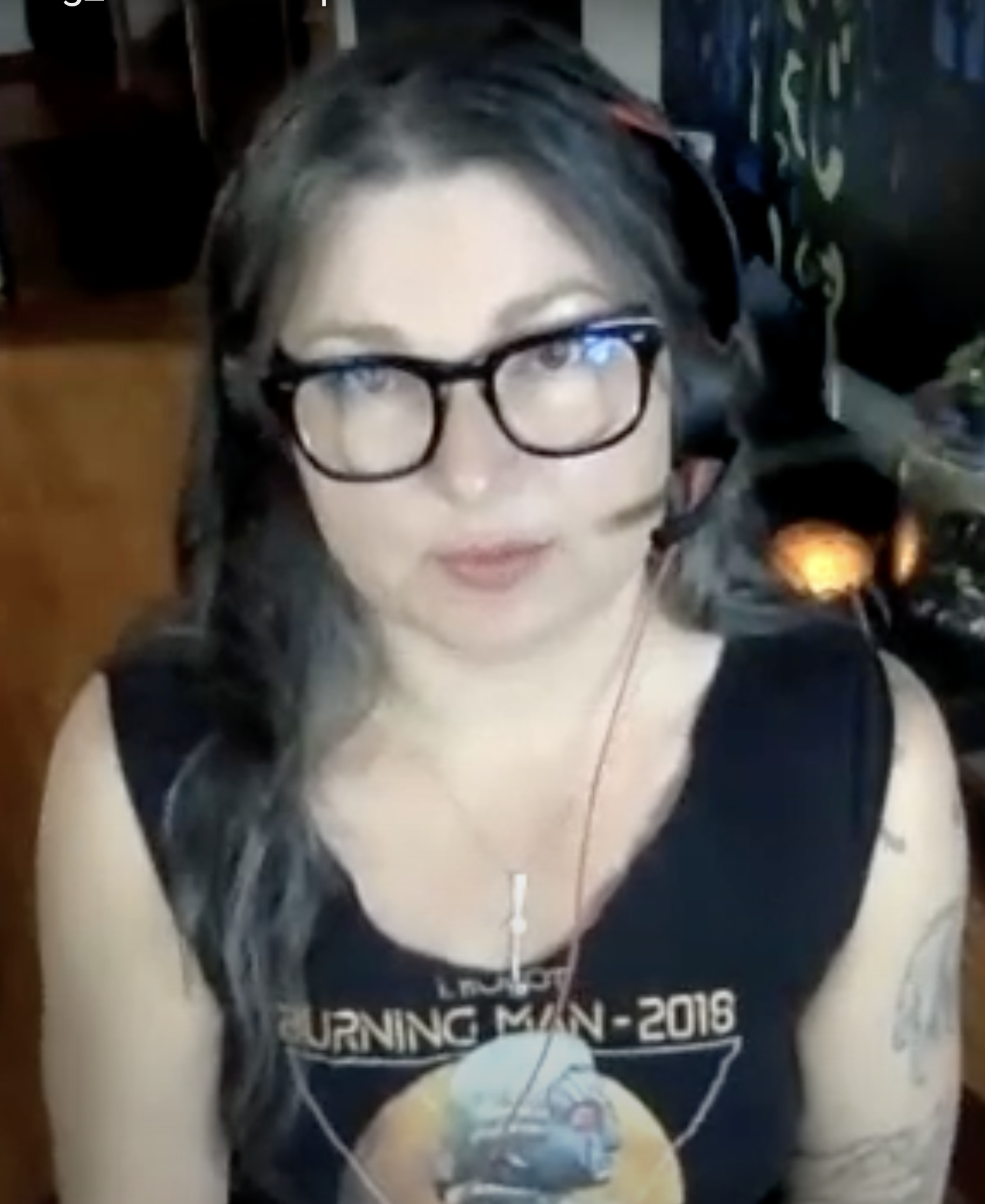 Brianna Camarda
Brianna Camarda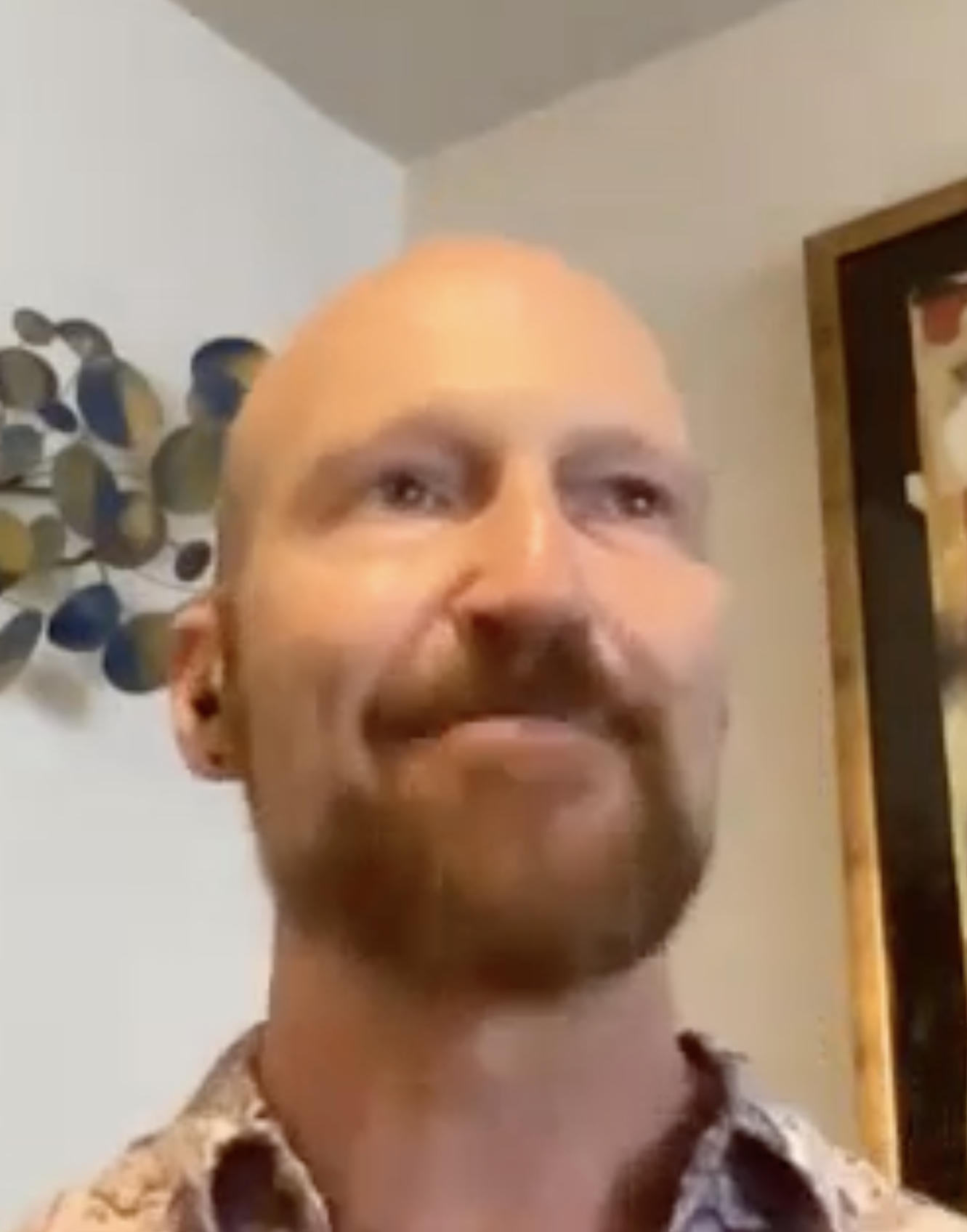 Bryan Nies
Bryan Nies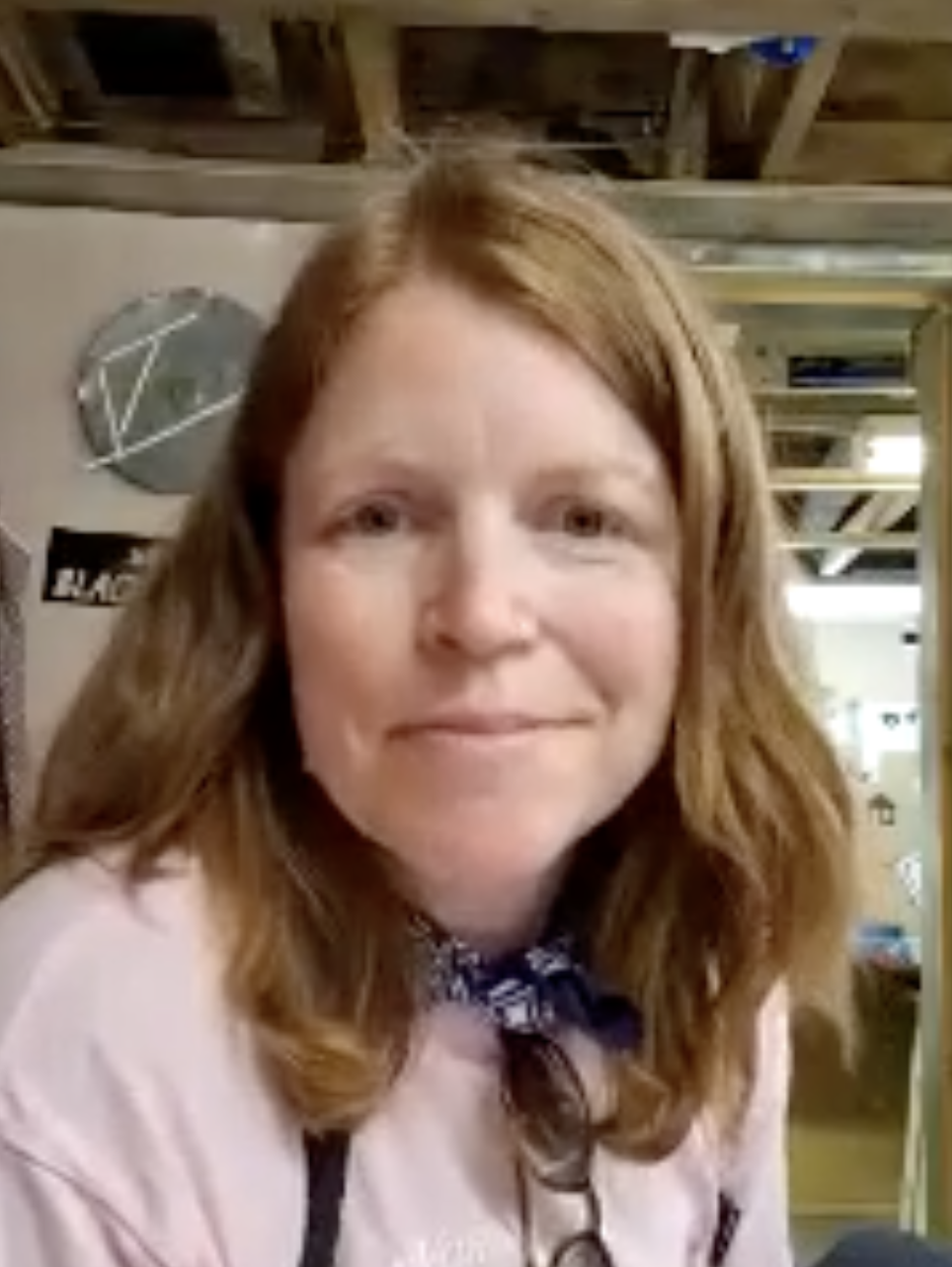 Ellen O'Neill
Ellen O'Neill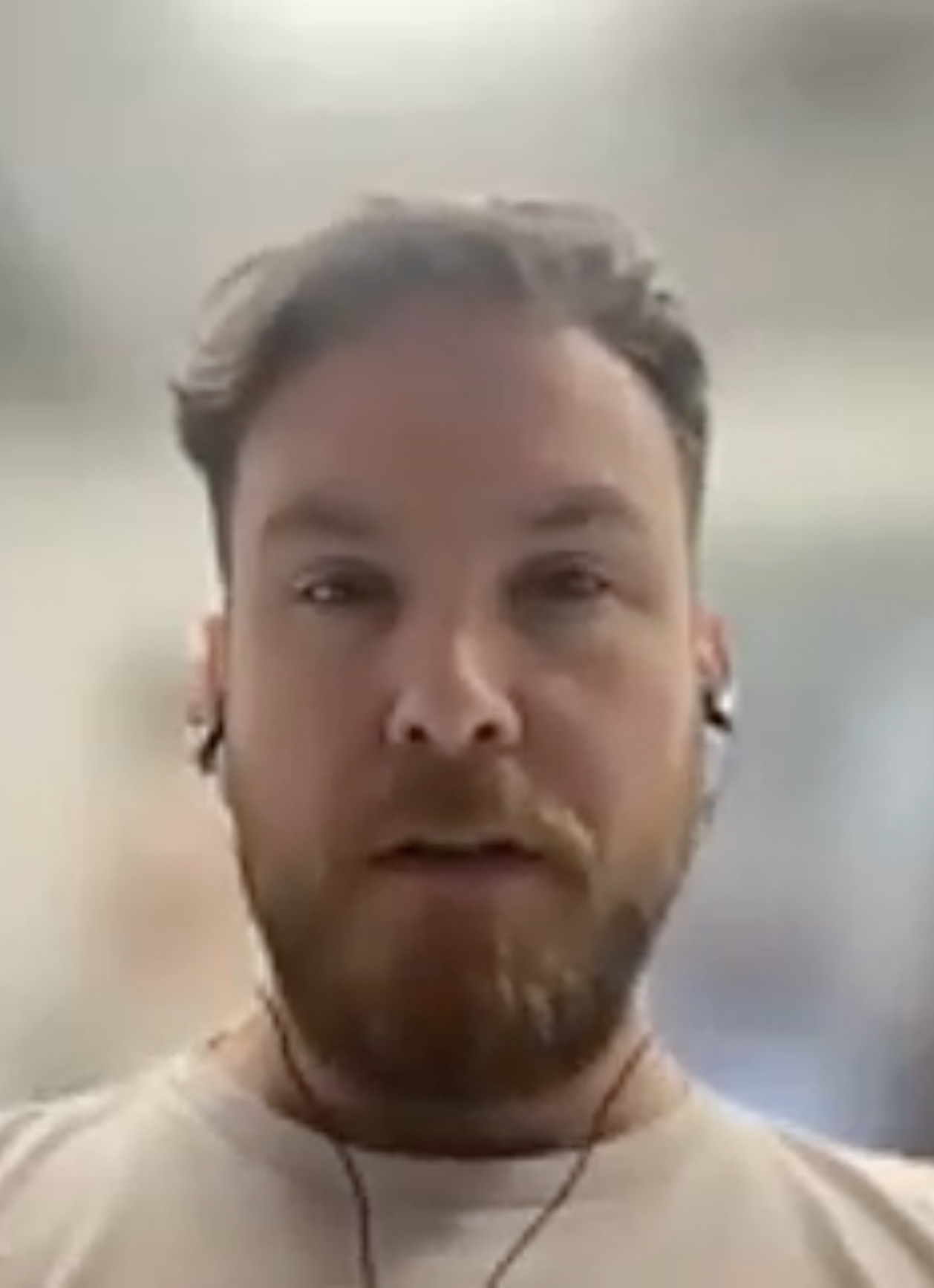 Eric Yttri
Eric Yttri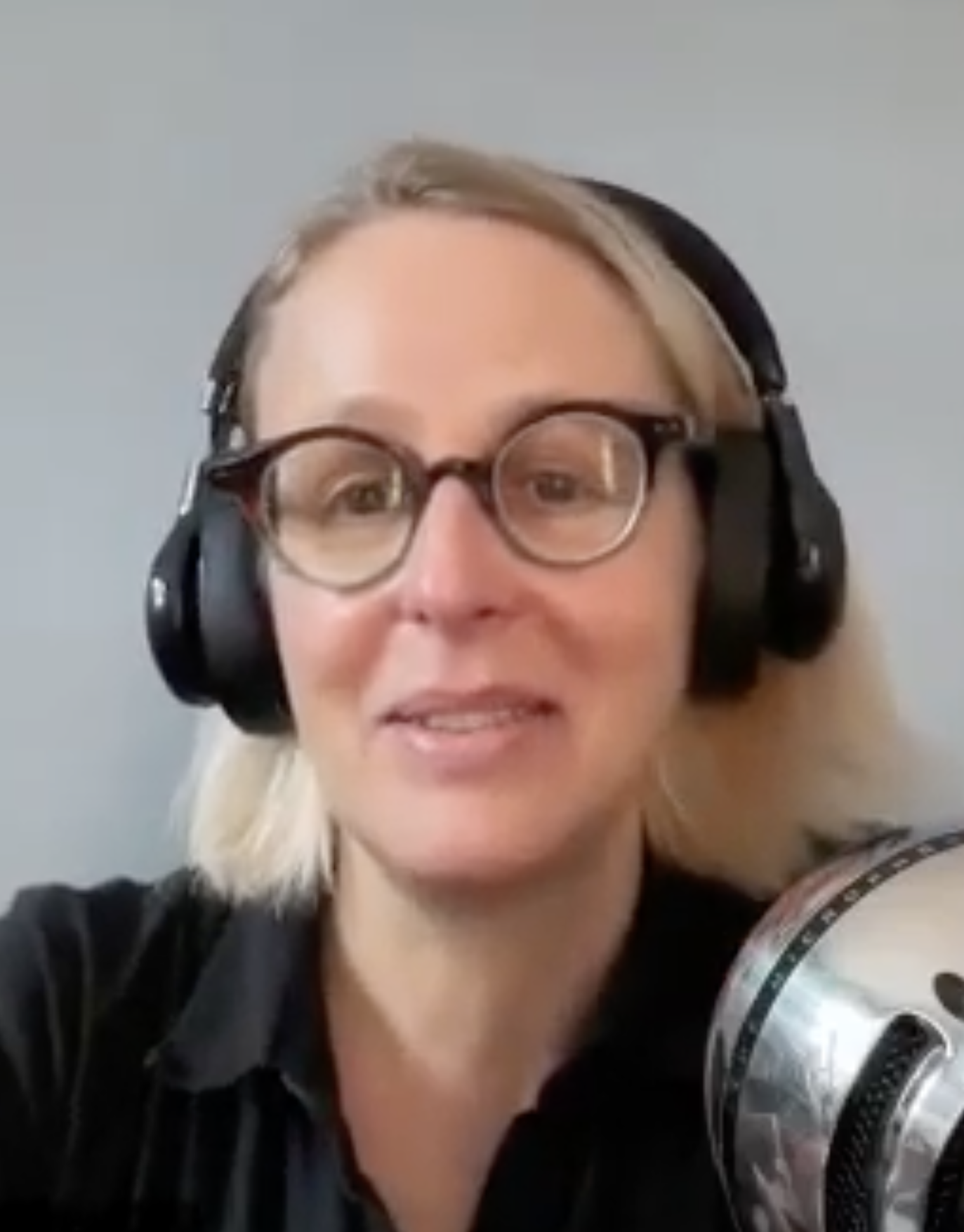 kbot
kbot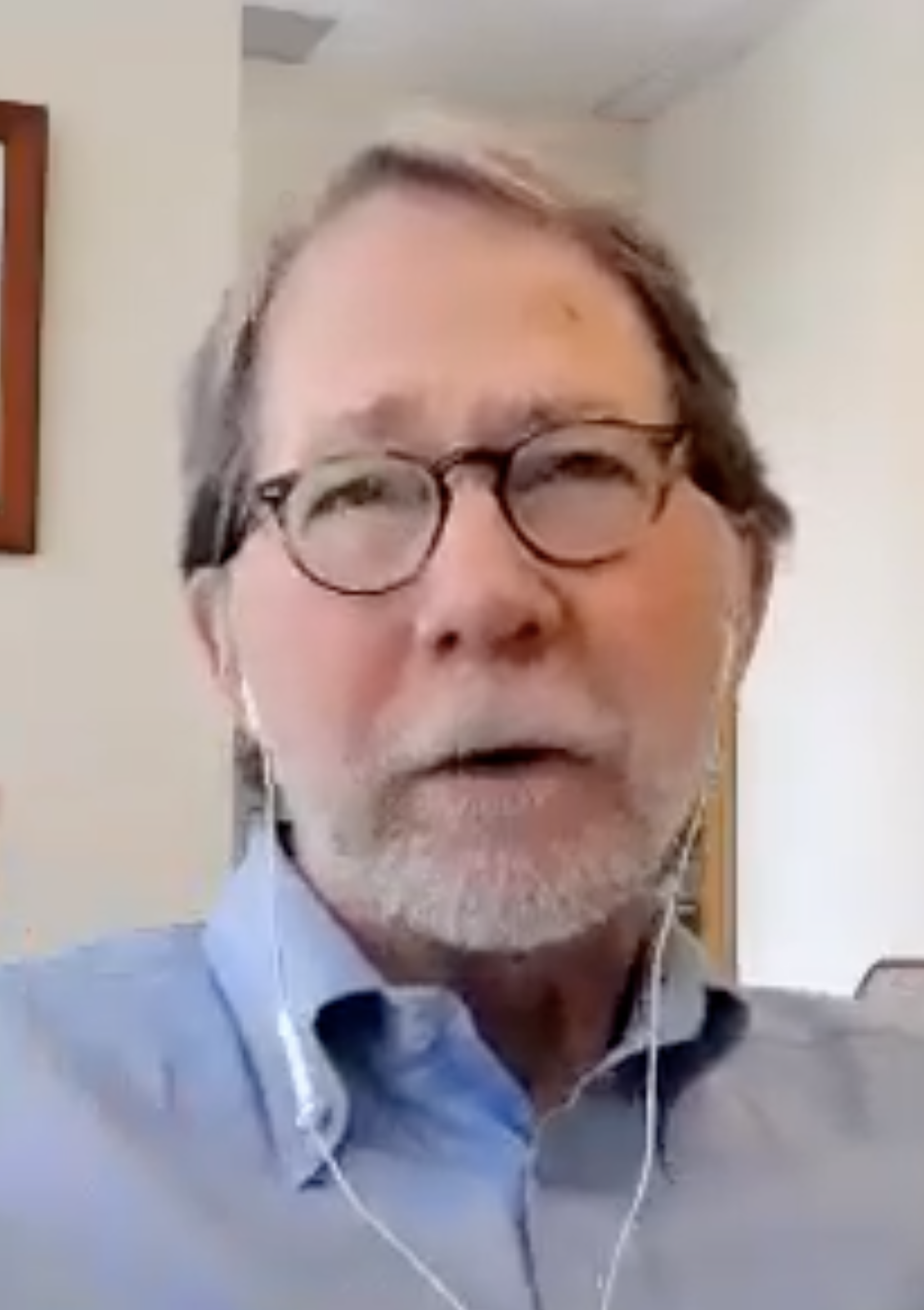 Philip Mease
Philip Mease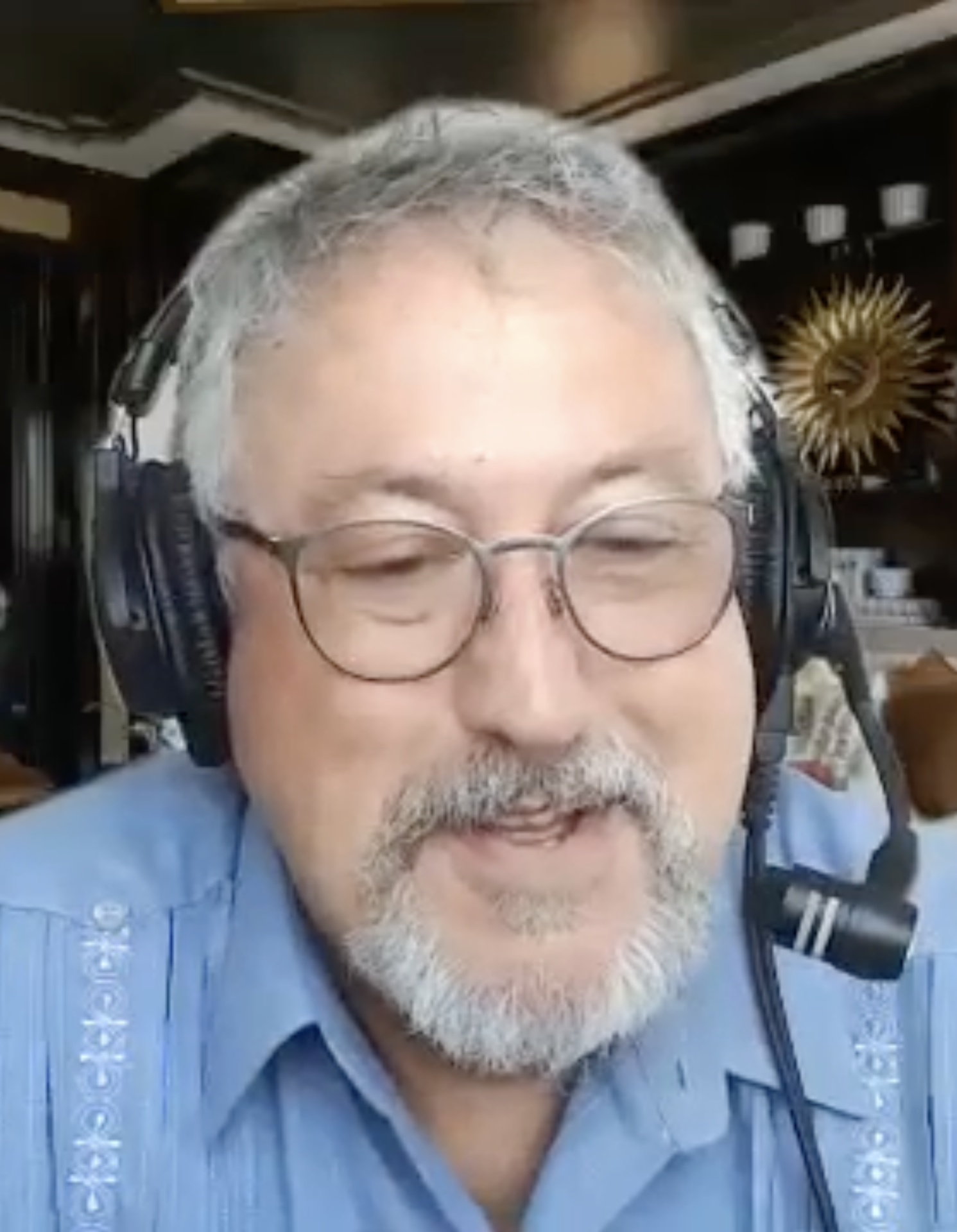 Stuart Mangrum
Stuart Mangrum
